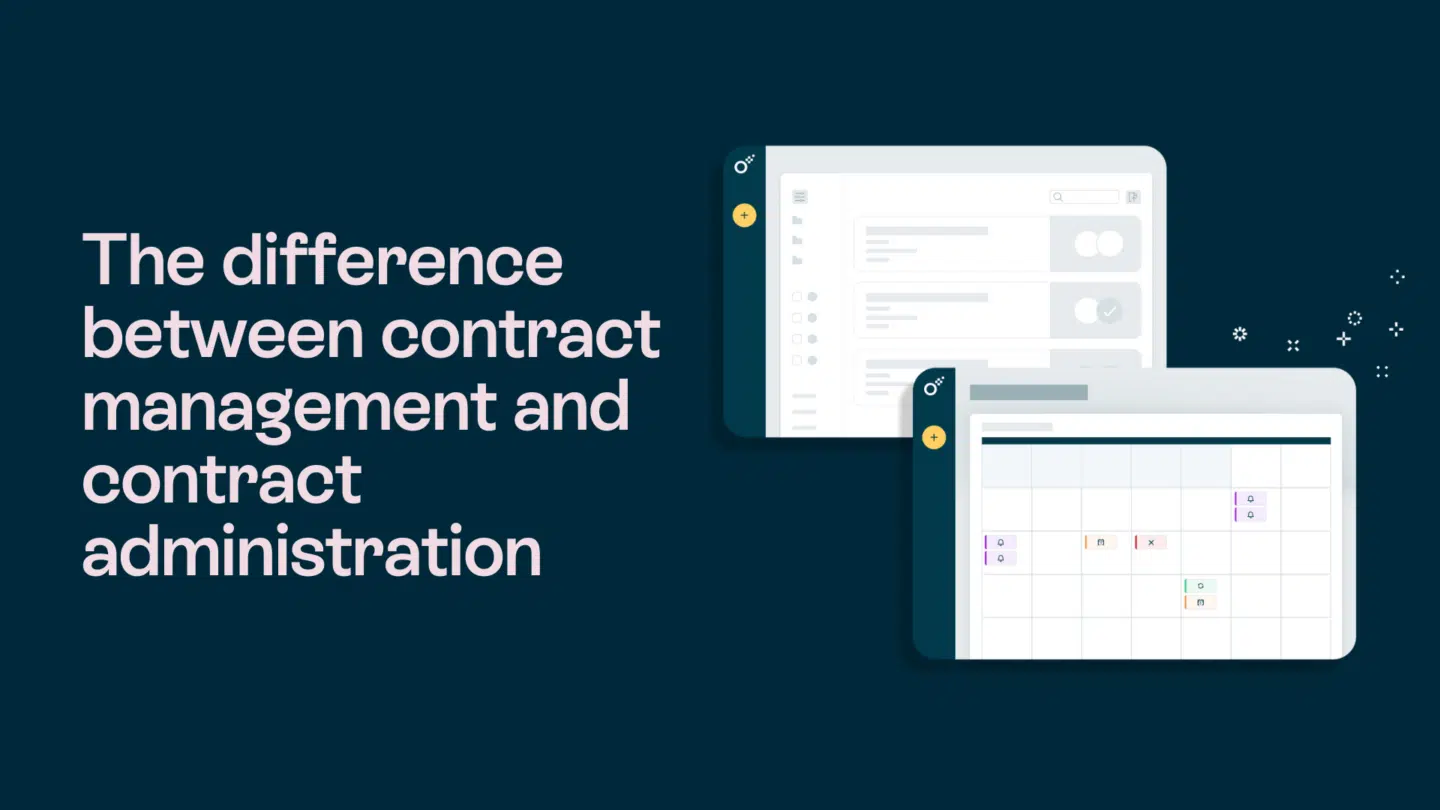In today’s fast-paced business world, managing obligations efficiently is crucial for the success and growth of any organization. Obligations can range from legal and financial responsibilities to contractual agreements and regulatory compliance. Without proper management, these obligations can become overwhelming, leading to errors, delays, and potential compliance risks.
The 101 of obligation management software
This software is a powerful tool that can help businesses streamline their operations and ensure that all obligations are met in a timely and efficient manner. This software provides a centralized platform for tracking, organizing, and managing various obligations, enabling businesses to stay on top of their responsibilities and avoid costly mistakes.
But what exactly is obligation management software and how does it work? Let’s dive deeper into its definition and key features to gain a better understanding.
Read also: What is contract management? a complete guide

Definition and key features of obligation management software
Software like this is designed to automate and simplify the process of managing obligations. It allows businesses to create a comprehensive database of all their obligations, including deadlines, requirements, and associated documents. With features such as automated reminders, task tracking, and document management, this software ensures that no obligation slips through the cracks.
Imagine a scenario where a business has multiple obligations to fulfill, such as regulatory compliance, contract fulfillment, and important deadlines to meet. Without a centralized system in place, it can be challenging to keep track of all these obligations and ensure that they are met on time. This is where obligation management software comes to the rescue.
By using obligation management software, businesses can input all their obligations into a centralized database. Each obligation can be categorized, tagged, and assigned to specific individuals or teams responsible for their completion. The software then generates automated reminders and notifications to ensure that everyone stays on track and no obligation is forgotten.
Furthermore, obligation management software often includes task tracking features that allow businesses to monitor the progress of each obligation. This enables managers to identify bottlenecks, allocate resources effectively, and ensure that everything is on schedule.
Another crucial feature of obligation management software is document management. Businesses can attach relevant documents, such as contracts, legal agreements, or compliance guidelines, to each obligation. This ensures that all the necessary information is easily accessible and eliminates the need for manual searching through files and folders.
The role of obligation management software in business
Effective obligation management is essential for businesses across industries. Whether it’s meeting regulatory requirements, fulfilling contractual obligations, or keeping track of important deadlines, obligation management software plays a crucial role in ensuring compliance and minimizing risks.
Let’s take a closer look at how this software can benefit businesses:
1. Compliance: In today’s complex regulatory landscape, businesses need to comply with various laws, regulations, and industry standards. Obligation management software helps businesses stay compliant by providing a centralized system to track and manage all regulatory obligations. It ensures that businesses are aware of their obligations, deadlines, and requirements, reducing the risk of non-compliance and potential penalties.
2. Contract Management: Businesses often have multiple contracts with customers, suppliers, and partners. Managing these contracts and ensuring their timely fulfillment can be challenging without a proper system in place. Obligation management software simplifies contract management by tracking key contract obligations, such as delivery dates, payment terms, and performance milestones. This helps businesses avoid contract disputes, penalties, and missed opportunities.
3. Risk Mitigation: By effectively managing obligations, businesses can mitigate risks associated with non-compliance, missed deadlines, and contractual disputes. Obligation management software provides visibility into all obligations, allowing businesses to proactively address potential risks, allocate resources efficiently, and ensure timely completion.
4. Efficiency and Productivity: Manual tracking and management of obligations can be time-consuming and prone to errors. Obligation management software automates repetitive tasks, such as sending reminders and tracking progress, freeing up valuable time for employees to focus on more strategic activities. This improves overall efficiency and productivity within the organization.
5. Collaboration and Communication: Obligation management software facilitates collaboration and communication among team members and stakeholders. It provides a centralized platform where everyone involved can access and update information, share documents, and communicate about specific obligations. This enhances transparency, accountability, and teamwork.
Read also: Contract tracking: A complete guide

The impact of obligation management software on business efficiency
This software has a big impact on business efficiency, positively influencing various aspects of daily operations.
Enhancing workflow and productivity
By streamlining the obligation management process, businesses can eliminate manual and repetitive tasks, reducing the chances of errors and allowing employees to focus on more valuable activities. With automated reminders and notifications, the software ensures that tasks are completed on time, preventing delays and bottlenecks that can hinder productivity.
Reducing errors and compliance risks
Errors in meeting obligations can have serious consequences for businesses, ranging from financial penalties to reputational damage. This software minimizes the risk of errors by providing a structured and systematic approach to obligations. By automating compliance checks and generating accurate reports, businesses can demonstrate their commitment to meeting obligations and reduce the likelihood of compliance issues.
Use these free business templates from Oneflow
Key benefits of implementing obligation management software
Implementing obligation management software can deliver a wide range of benefits for businesses.
Cost savings and ROI
While the initial investment in obligation management software may seem significant, the long-term cost savings are substantial. By reducing errors, avoiding penalties, and improving efficiency, businesses can achieve a high return on investment. Additionally, the software helps businesses allocate resources effectively, allowing them to focus on core activities and strategic initiatives.
Improved decision making and strategic planning
Obligation management software provides businesses with valuable insights into their obligations, allowing for better decision making and strategic planning. By having a comprehensive view of all obligations and associated data, businesses can identify trends, patterns, and potential risks, enabling them to make informed decisions and develop effective strategies.
Read also: Contract lifecycle management: A complete guide

Choosing the right obligation management software for your business
When selecting obligation management software, it’s crucial to consider various factors to ensure that it aligns with your business needs and goals.
Factors to consider when selecting software
First and foremost, consider the specific obligations your business needs to manage. Look for software that offers customization options to accommodate your unique requirements. Additionally, consider the software’s user-friendliness, scalability, integration capabilities, and customer support.
Understanding the implementation process
Implementing obligation management software requires careful planning and execution. It’s crucial to understand the implementation process and allocate sufficient time and resources for a smooth transition. Pay attention to data migration, training needs, and change management to ensure successful adoption throughout the organization.
Read also: The benefits of using contract reminder software

Future trends in obligation management software
As technology continues to evolve, so does the field of obligation management software. Here are some future trends to watch out for:
Technological advancements and their impact
Advances in artificial intelligence (AI), machine learning, and data analytics will revolutionize obligation management software. These technologies will enhance automation, improve decision-making capabilities, and provide businesses with more accurate and real-time insights into their obligations.
Preparing your business for future changes
Businesses need to be proactive in adapting to future changes in obligation management software. This includes staying updated with the latest technological advancements, regularly reviewing and updating software systems, and investing in employee training to ensure they have the necessary skills to leverage new features and capabilities.
The key takeaways
Obligation management software is a powerful tool that can help streamline business operations and ensure compliance with various obligations. By automating and centralizing the management process, businesses can improve efficiency, reduce errors, and make informed decisions. Choosing the right software and staying abreast of future trends are crucial steps in maximizing the benefits of obligation management software and staying ahead in an increasingly competitive business landscape.








